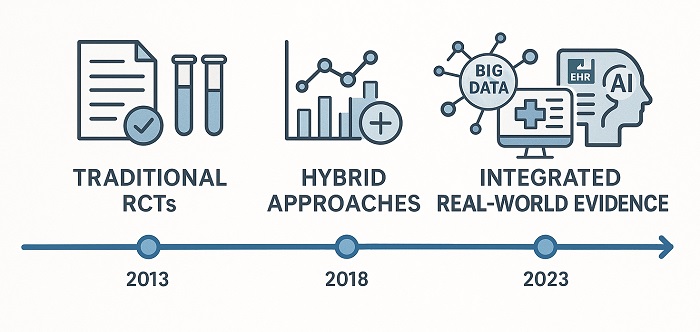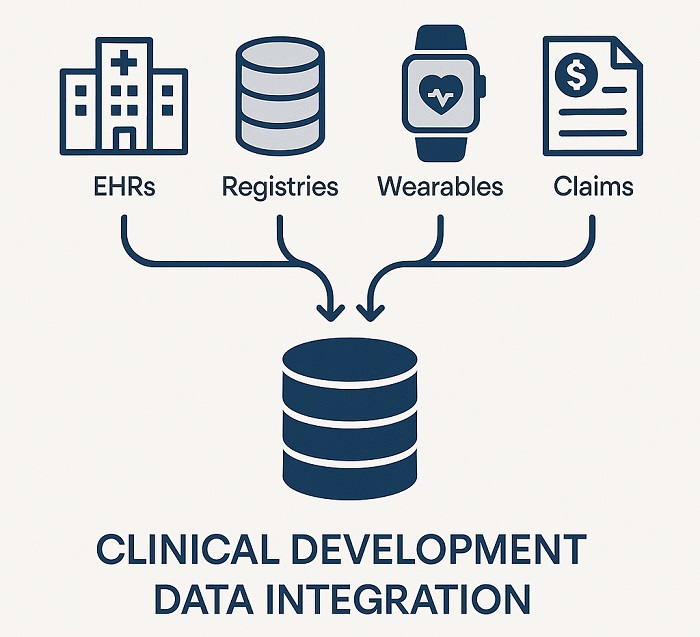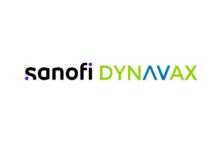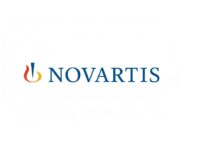The fact remains that the pharmaceutical spectrum happens to stand on the edge of fundamental transformation as the real-world evidence clinical development methods go on to reshape how one gauges the therapeutic intervention. This kind of revolution happens to go far beyond just supplementing the trials, which are traditionally randomized and controlled, and hence represents a phenomenal shift, which shows immense promise in order to democratize the clinical evidence generation, while at the same time addressing the long-standing limitations when it comes to drug development processes.
The rising paradigm of real-world evidence integration
Real-world evidence clinical development has gone on to evolve from a supplementary data source to the cornerstone of modern pharmaceutical research. The blend of electronic health records, variable devices, patient registries, and claims databases has gone on to create unmatched opportunities to understand the effects of treatment all across the diverse populations and also extended timeframes. This kind of comprehensive approach happens to address the fundamental limitations that are inherent in terms of traditional clinical trial designs, as well as stringent eligibility criteria, which often exclude the patients who mostly happen to represent real-world treatment populations.
This kind of transformation takes into consideration multiple dimensions when it comes to clinical development, right from early-phase dose optimization to post-market surveillance with life-cycle management. Unlike the traditional approaches, which depend quite heavily on controlled environments, real-world evidence clinical development happens to capture the intricacies of actual clinical practice, which includes the likes of variations in adherence patterns, management of comorbidities, and also healthcare delivery systems throughout varied geographic as well as socioeconomic contexts.
 Evolution Timeline showing progression from RCTs to integrated real-world evidence approaches
Evolution Timeline showing progression from RCTs to integrated real-world evidence approaches
The recent regulatory acknowledgement has picked up on this transformation, with agencies across the world recognizing that only the traditional clinical trials cannot offer a complete picture when it comes to therapeutic value. The real-world evidence framework from the FDA, as well as certain other similar initiatives across the world, signals official acceptance that the diverse evidence sources can actually strengthen regulatory decision-making when they get appropriately designed as well as implemented.
Methodological innovations, which drive the revolution
The success of real-world evidence clinic development happens to depend quite heavily on sophisticated methodological approaches, which go on to address certain inherent barriers when it comes to observational data evaluation. Advanced causal inference techniques, which include the likes of propensity score matching along with variables as well as machine learning algorithms, help the researchers to extract certain meaningful information from intricate datasets while at the same time, controlling the confounding factors, which would otherwise compromise the study’s validity.
 Data Source Integration Map illustrating how multiple RWD sources feed clinical development
Data Source Integration Map illustrating how multiple RWD sources feed clinical development
It is well to be noted that practical clinical trial designs happen to represent particularly promising evolution, which blends the rigor of randomized control trials along with generalizability in terms of real-world studies. These hybrid approaches go on to incorporate broader inclusion criteria and agile treatment protocols along with endpoints that reflect routine clinical decision-making processes. By way of embedding randomization into real-world care delivery systems, pragmatic trials can offer evidence that is both scientifically strong as well as clinically relevant.
The integration of AI along with machine learning technologies has further brought analytical capacities within the real-world evidence of clinical development. These tools can go ahead and identify patterns through massive datasets, anticipate treatment responses within specific patient subgroups, and also consistently update evidence as new data happens to become available. Such kinds of dynamic approaches when it comes to evidence generation happen to represent a significant departure from the time-limited and static traditional trial designs.
Effect on drug development timelines along with expenditure
Real-world evidence clinical development happens to offer quite substantial opportunities so as to speed up the drug development while at the same time decreasing the associated expenditure. Early integration when it comes to real-world data can inform dose selection, pinpoint optimal patient populations, and also anticipate potential safety signals before the expensive phase 3 trials begin. This kind of proactive approach helps the sponsors to make more informed go or no-go decisions much earlier in the development, thereby potentially saving billions of dollars and also years of development in terms of time.
Apparently, the ability in order to conduct virtual control arms by way of using historical real-world data happens to represent another prominent advancement, which is especially valuable in their disease research in which recruiting the right control populations may as well be challenging or ethically questionable. By making utmost use of the existing patient data in order to establish the comparative baseline, researchers can decrease the study sizes and also speed up the recruitment while at the same time maintaining the scientific rigor.
Post-market generation by way of real-world evidence clinical development also helps ongoing value all across the product life cycles. Consistent tracking of treatment outcomes helps proactive identification of safety signals, optimization of treatment protocols, and also identification of certain new therapeutic opportunities. This kind of approach helps transform drug development from discrete phases into consistent learning cycles, which generates value, which is well beyond initial market authorization.
Regulatory evolution along with acceptance
The regulatory spectrum surrounding the real-world evidence clinical development has also undergone dramatic transformation, with agencies across the world developing frameworks in order to incorporate diverse evidence sources within the approval process. The approval of numerous new drug applications by the FDA, which incorporates real-world evidence, demonstrates the rising regulatory confidence in such methodologies when they get implemented well.
There are regulatory agencies that now offer detailed guidance in terms of acceptable real-world data sources, analytical methodology, and also study designs, which can actually support numerous regulatory decisions. These frameworks take into account numerous types of evidence that may be right for different regulatory purposes, right from initial efficacy demonstration to post-market safety tracking along with indication expansion.
The evolution towards a more agile regulatory pathway happens to reflect recognition that the traditional one-size-fits-all approach may well not be optimal for all the therapeutic areas or even patient populations. Real-world evidence clinical development helps with more nuanced regulatory decision-making, which can account for certain specific disease traits, patient requirements, and also available treatment choices.
Barriers along with quality considerations
In spite of its promise, real-world evidence of clinical development happens to face quite significant barriers, which must be addressed in order to realize its complete potential. Data quality happens to represent perhaps the most crucial concern since real-world data sets often happen to contain the missing information, inconsistencies in coding, and also temporal gaps, which can actually compromise the analytical validity. A strong data governance framework along with quality assurance processes is the need of the hour so as to make sure that real-world evidence goes on to meet regulatory as well as clinical standards.
Standardization across the data sources along with the analytical methodologies happens to remain another prominent barrier. The heterogeneity of healthcare systems and data collection procedures, along with coding practices, can actually complicate the endeavors to mix evidence coming from numerous sources or even replicate the findings throughout different populations. This kind of industry-wide effort in order to develop common data models along with analytical benchmarks is indeed gradually addressing these levels of challenges.
The directions and opportunities of the future
The future, when it comes to real-world evidence development, happens to promise even greater integration in terms of traditional research methodology by way of innovative study designs as well as analytical methods. Adaptive trial designs, which happen to incorporate real-world evidence coming from interim analysis and modifications as well as sample size alterations, go on to represent the next evolution within clinical research methodology.
Apparently, digital health technologies continue to expand the scope as well as the granularity of real-world data collection. Smartphone applications, wearable devices, and also remote tracking systems offer a consistent stream of patient-generated data, which gives out unmatched insights into treatment effects along with patient experiences. As these technologies continue to evolve, they will help with more precise as well as customized approaches when it comes to evidence generation.
Interestingly, the development of global research networks along with standardized data infrastructure is going to facilitate a larger-scale real-world evidence development initiative, which happens to span numerous countries as well as healthcare systems. Such kinds of partnerships promise to generate evidence that is comprehensive along with being more generalizable as compared to traditional single studies.
Notable, real-world evidence clinical development happens to represent more than just a methodological advancement—it actually embodies a fundamental reimagining in terms of how therapeutic evidence should get generated, assessed, and also applied. As this revolution continues to unleash, it also promises to democratize access to certain clinical evidence while at the same time making sure that research findings become more precise and reflect the diverse realities in terms of modern healthcare delivery. The successful integration of real-world evidence within clinical development processes is going to ultimately be advantageous to patients by being a more effective, customized, and accessible therapeutic intervention.




















